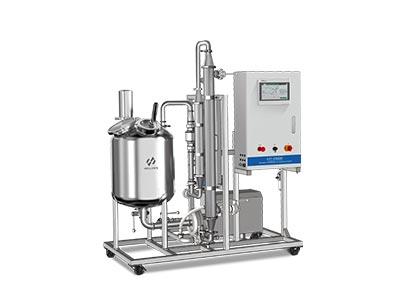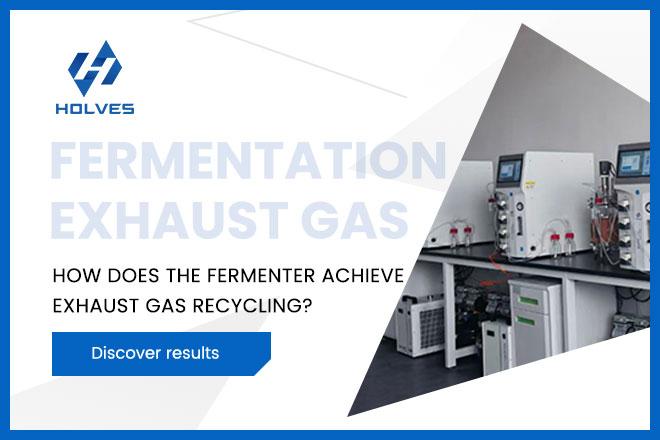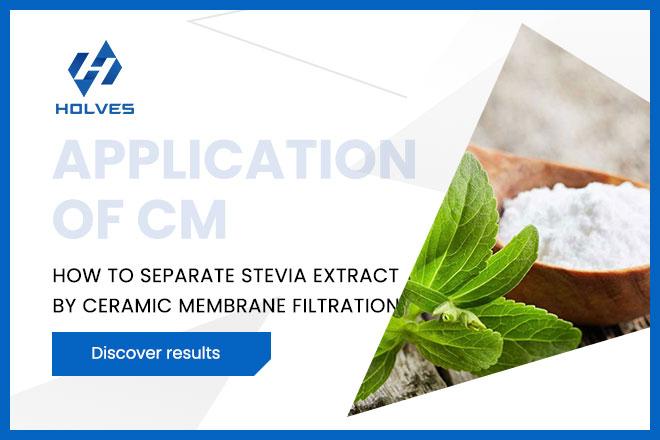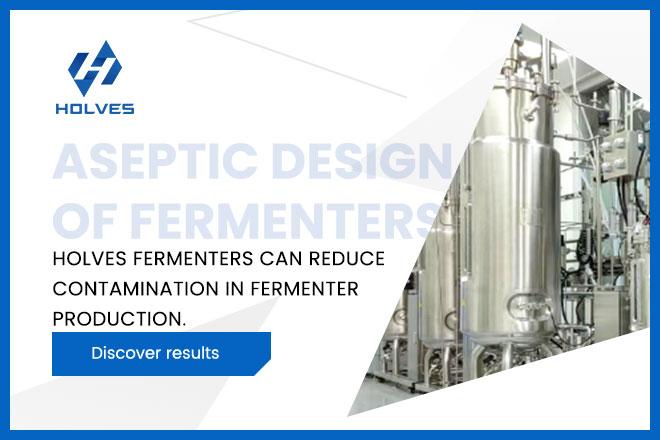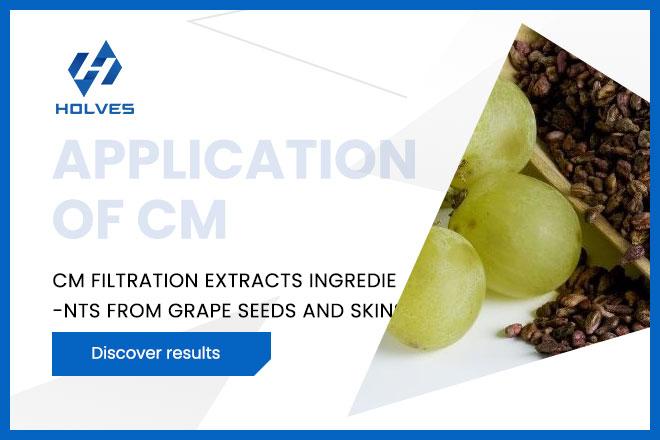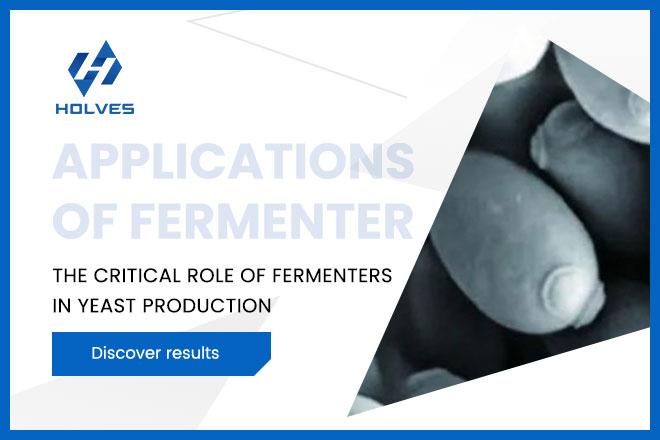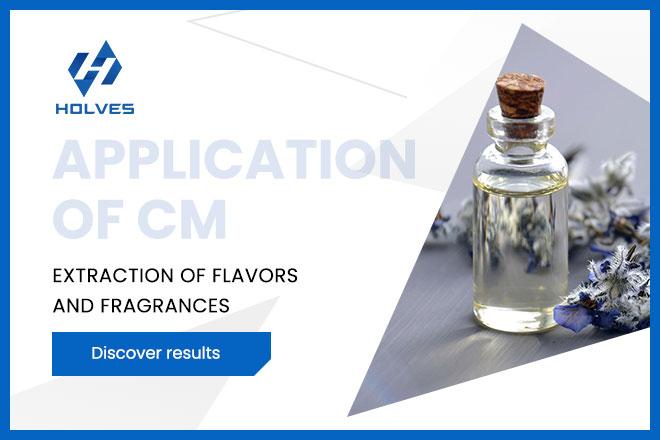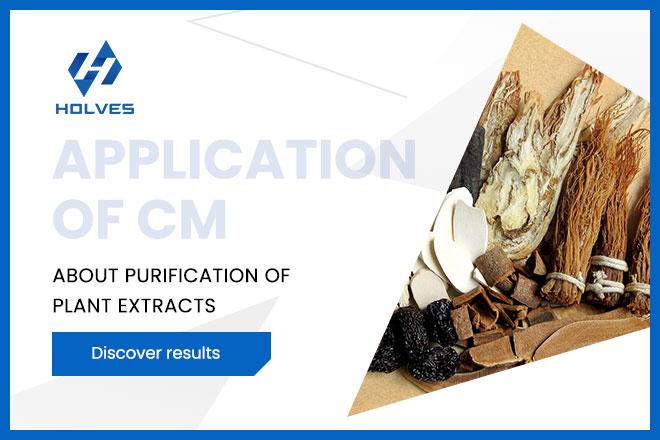Among the many segments of the food industry, edible gums have always been widely used. From thickening of beverages, stabilization of emulsification, to texture improvement of baked goods, edible gums are everywhere. Ceramic membrane filtration technology has also gradually become a key means for the edible gum industry to improve production efficiency and ensure product quality.
Most of the edible gums belong to polysaccharide derivatives, which are hydrocolloids. The production process is complex and involves a number of steps such as extraction, separation, concentration and purification. In the traditional process, many challenges are often faced: incomplete removal of impurities, low product purity, high risk of microbial contamination, and low production efficiency. These problems not only affect product quality, but also increase production costs and energy consumption. Therefore, the edible gum industry is in dire need of an efficient, stable and environmentally friendly filtration technology to address these pain points.
Most of the edible gums belong to polysaccharide derivatives, which are hydrocolloids. The production process is complex and involves a number of steps such as extraction, separation, concentration and purification. In the traditional process, many challenges are often faced: incomplete removal of impurities, low product purity, high risk of microbial contamination, and low production efficiency. These problems not only affect product quality, but also increase production costs and energy consumption. Therefore, the edible gum industry is in dire need of an efficient, stable and environmentally friendly filtration technology to address these pain points.
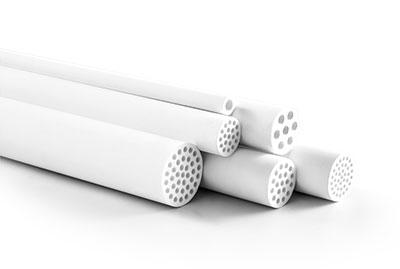
Ceramic Membrane Filtration Technology
1. Highly efficient separation and purification
During the production of edible gum, the gum liquid often contains a large number of impurities and microorganisms, which can affect the final quality and safety of the product. The high-precision pore size distribution of the ceramic membrane enables it to effectively retain these impurities while allowing the target components to pass through smoothly, thus realizing efficient separation and purification.
2. High-temperature and corrosion resistance
The production process of edible gums may involve high-temperature treatment or acidic and alkaline environments. The high temperature resistance (up to 400℃) and good chemical stability of the ceramic membrane enable it to operate stably under these harsh conditions without chemical corrosion or performance degradation, thus ensuring the smooth running of the production process. This characteristic makes ceramic membranes excellent for the extraction and concentration of edible gums, especially for processes that require autoclaving or acid-base treatment.
3. Save time and money
In addition, the ceramic membrane has a long service life, strong anti-pollution ability, low cleaning and maintenance costs. Can shorten the enterprise production cycle, energy saving and consumption for the enterprise.
During the production of edible gum, the gum liquid often contains a large number of impurities and microorganisms, which can affect the final quality and safety of the product. The high-precision pore size distribution of the ceramic membrane enables it to effectively retain these impurities while allowing the target components to pass through smoothly, thus realizing efficient separation and purification.
2. High-temperature and corrosion resistance
The production process of edible gums may involve high-temperature treatment or acidic and alkaline environments. The high temperature resistance (up to 400℃) and good chemical stability of the ceramic membrane enable it to operate stably under these harsh conditions without chemical corrosion or performance degradation, thus ensuring the smooth running of the production process. This characteristic makes ceramic membranes excellent for the extraction and concentration of edible gums, especially for processes that require autoclaving or acid-base treatment.
3. Save time and money
In addition, the ceramic membrane has a long service life, strong anti-pollution ability, low cleaning and maintenance costs. Can shorten the enterprise production cycle, energy saving and consumption for the enterprise.
Specific application examples of ceramic membranes in the edible gum industry
1. Applications in Carrageenan Production
Carrageenan is a commonly used edible gum that is highly viscous and safe and non-toxic, and its production process requires filtration and concentration of the extract. Ceramic membrane microfiltration can remove bacteria and suspended impurities in carrageenan extract, while ceramic nanofiltration and ultrafiltration membranes can effectively concentrate carrageenan. The use of ceramic membrane systems reduces the ash content of carrageenan, reduces the amount of potassium chloride added during subsequent coagulation, and improves the quality of the product by reducing microbial contamination.
2. Applications in Gelatin Production
In the production process of gelatin, ceramic membranes can be used to remove impurities and microorganisms from the gelatin solution and improve the clarification and purity of gelatin. In addition, ceramic membranes can be used in the concentration process of gelatine to improve production efficiency and reduce energy consumption. Through ceramic membrane filtration technology, the gelatine production process is more efficient and stable, and product quality has been significantly improved.
Carrageenan is a commonly used edible gum that is highly viscous and safe and non-toxic, and its production process requires filtration and concentration of the extract. Ceramic membrane microfiltration can remove bacteria and suspended impurities in carrageenan extract, while ceramic nanofiltration and ultrafiltration membranes can effectively concentrate carrageenan. The use of ceramic membrane systems reduces the ash content of carrageenan, reduces the amount of potassium chloride added during subsequent coagulation, and improves the quality of the product by reducing microbial contamination.
2. Applications in Gelatin Production
In the production process of gelatin, ceramic membranes can be used to remove impurities and microorganisms from the gelatin solution and improve the clarification and purity of gelatin. In addition, ceramic membranes can be used in the concentration process of gelatine to improve production efficiency and reduce energy consumption. Through ceramic membrane filtration technology, the gelatine production process is more efficient and stable, and product quality has been significantly improved.
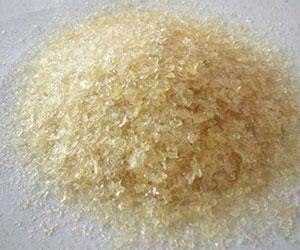
3. Applications in Pectin Production
Pectin is a natural plant polysaccharide widely used in the food industry. In the production of pectin, ceramic membranes can be used to remove pulp residues, microorganisms and other impurities from the pectin extract, thereby improving the purity and clarity of the pectin. At the same time, the high concentration efficiency of ceramic membranes can also reduce energy consumption in the subsequent drying process and lower production costs.
Ceramic membrane filtration technology brings new hope and change to the traditional process. It can not only solve the many pain points in the traditional process, but also bring higher production efficiency, lower production costs and better quality products for enterprises. If you are still worried about the impurities, microorganisms, efficiency and other problems in the production of edible gum, why not try the ceramic membrane filtration technology, maybe it is the “savior” you have been looking for!
Here is the Holves brand website, https://www.bjholves.com/. Providing different types of industry information, technical knowledge, and solutions, we have developed and produced several new laboratory fermenter, bioreactor, tangential flow filtration system and other equipment to meet your needs from experimental to industrial production.
Pectin is a natural plant polysaccharide widely used in the food industry. In the production of pectin, ceramic membranes can be used to remove pulp residues, microorganisms and other impurities from the pectin extract, thereby improving the purity and clarity of the pectin. At the same time, the high concentration efficiency of ceramic membranes can also reduce energy consumption in the subsequent drying process and lower production costs.
Ceramic membrane filtration technology brings new hope and change to the traditional process. It can not only solve the many pain points in the traditional process, but also bring higher production efficiency, lower production costs and better quality products for enterprises. If you are still worried about the impurities, microorganisms, efficiency and other problems in the production of edible gum, why not try the ceramic membrane filtration technology, maybe it is the “savior” you have been looking for!
Here is the Holves brand website, https://www.bjholves.com/. Providing different types of industry information, technical knowledge, and solutions, we have developed and produced several new laboratory fermenter, bioreactor, tangential flow filtration system and other equipment to meet your needs from experimental to industrial production.
